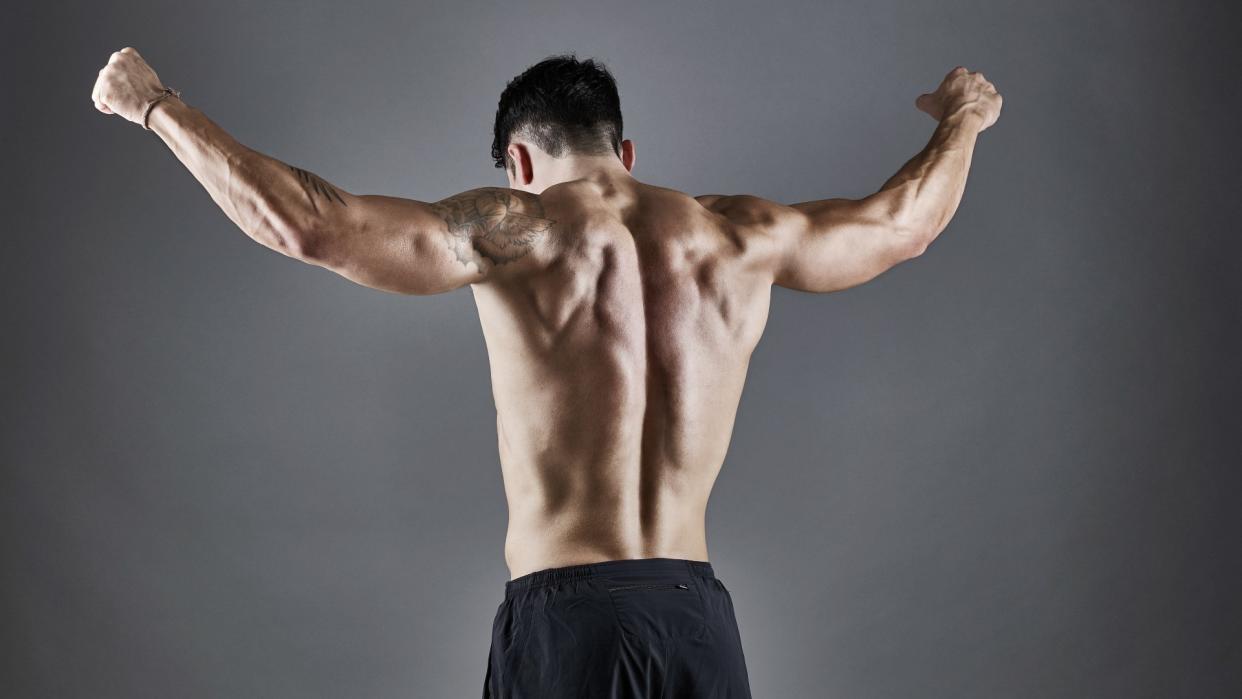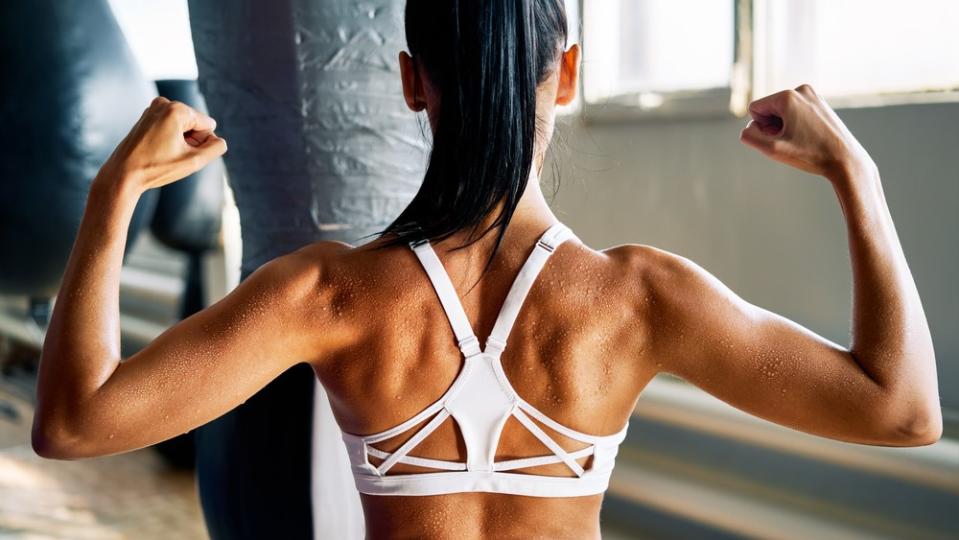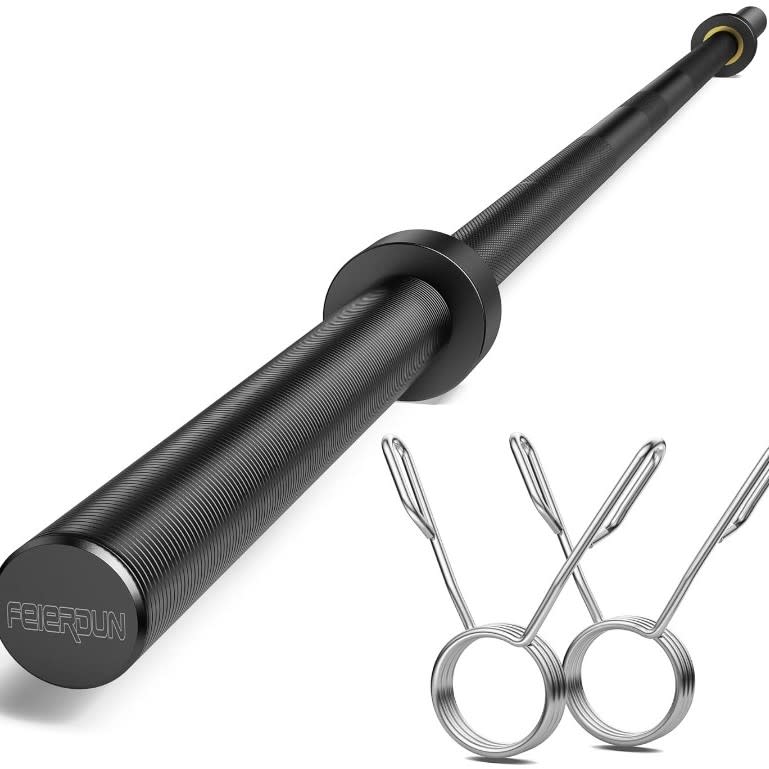Forget dumbbells — build a strong back and biceps with these 3 upper-body barbell exercises

The next time you hit the gym for back and biceps day, consider adding these three barbell exercises to your upper body routine.
Anyone can benefit from the moves below, including barbell beginners, and you can add them to an existing strength or hypertrophy program to build and strengthen your back and biceps muscles.
After all, switching up your routine every month or two will keep muscles challenged and help prevent the dreaded muscle-building plateau we all face at some stage. Get ready to torch your traps and build your back, and we'll also explore the benefits, muscles worked and how to properly execute each move.
What are the 3 barbell exercises for building back strength?

Barbells are the perfect gym equipment for building strength, power and muscle. You can progressively overload your body by adding weight to the barbell over time, and unlike resistance bands or dumbbells, you won’t run out of options.
Give these three back and biceps exercises a shot if you’re short on new moves.
1. Standing barbell shrugs
The upper and mid trapezius get hit hardest during shrugs, helping to sculpt muscle definition in your upper back. Strengthening these muscles also supports posture and protects your shoulders from injury.
Either start with a loaded barbell on the floor in front of you or racked slightly above knee height on a squat rack
Grip the bar overhand, slightly wider than shoulder-width apart and wrap your thumbs around the bar
Keep the barbell close to your shins
Brace your stomach, glutes and shoulders and keep your chest lifted and back flat
Deadlift the bar to stand. The bar should touch your thighs
Lift the bar by shrugging your shoulders upward and backward
Squeeze your shoulder blades together and keep your arms straight
Squeeze your back at the top and pause for a few seconds
Slowly lower the bar back to the standing position then repeat for reps
Keep tension in your muscles by moving slowly and with control, squeezing and pausing at the top of each rep.
2. Barbell power clean
Power cleans build muscular power and work your quads, glutes, hamstrings, calves, back biceps, core and shoulders.
The move requires you to drive a loaded barbell from the floor to your shoulders in one movement, transferring the load from the lower to the upper body using your legs, core and back muscles while keeping the bar traveling in a straight line close to the body.
Stand with your feet hip-width apart and the barbell in front of you close to your shins
Grip the bar just outside your shins and position the bar close to your body
Squat, lift your chest and lower your bum
Maintain a flat back and look straight ahead
Drive up through your feet as you begin to lift the bar with your shoulders over the bar
As the bar reaches your thighs, extend your hips and legs, keeping the barbell close to your body
Pull the bar upward and quickly drive your elbows under the bar to receive it in the front rack with knees softly bent
Stand, keeping your elbows forward
Remember, your arms shouldn’t be doing the majority of the work. The power should be coming from the legs and core and you’ll transfer the bar to your upper body at the last second.
3. Barbell high pulls
High pulls combine a partial deadlift and upright row, but often (wrongly) get taught as an upright row. The move relies on power as you drive the barbell toward your face and primarily targets the trapezius and deltoids while activating your core, hips and hamstrings.
Learning the explosive high pull could help you with transition exercises and powerlifting moves like cleans, squat cleans and snatches. Besides, your trapezius muscles respond to powerful exercises, so it’s a great exercise for strengthening and building muscle in your upper back.
Start with your feet hip or shoulder-width apart, core engaged
Stand tall without arching your back or rounding your shoulders
Grip your barbell slightly wider than shoulder-width using an overhand grip and stand with the bar close to your thighs
Softly bend the knees and dip, as if performing a Romanian deadlift, allowing the bar to pass down your thighs slightly
Stand and drive the bar upward, shrugging your shoulders and pulling the elbows high to the sides
Draw your shoulder blades together to pull the bar in and avoid letting it travel away from your body
Lower to the starting position, reset and repeat for reps

CAP Barbell Olympic bar: now $59 @ Amazon
The bar has a weight capacity of 500 lbs and features an 11-inch loadable sleeve length and diamond knurling with rotating sleeves. Just bear in mind that collars aren't included but you do get a 30-day manufacturer's warranty.View Deal
Benefits of these barbell exercises
There are many large, powerful muscle groups in your body, and your latissimus dorsi (wing-shaped muscles down the sides of your back) and trapezius (upper, middle and lower) are just some of the muscles found in your back that create shape, bulk and definition.
The pulling motions that recruit your biceps and back muscles together are great at targeting these muscle groups, alongside recruiting the rhomboids (deeper back muscles responsible for posture and retracting the scapula), posterior deltoids (rear shoulders) and various stabilizer muscles like the rotator cuff.
The exercises above are primarily designed to hit the traps and shoulders harder. Still, we recommend checking out some of the back and biceps routines below for a well-rounded upper-body workout that targets every major muscle group.
If you’ve got your back workouts locked in but aren’t sure how to program them to your goals, we cover hypertrophy and strength training techniques and how much protein you need to build muscle to help guide you toward your muscle-building goals.
Just remember, Rome wasn't built in a day and neither are muscles. You'll need to train several times a week and adjust your training plan as you build strength and muscle. If it's too comfortable, it's no longer serving you.

